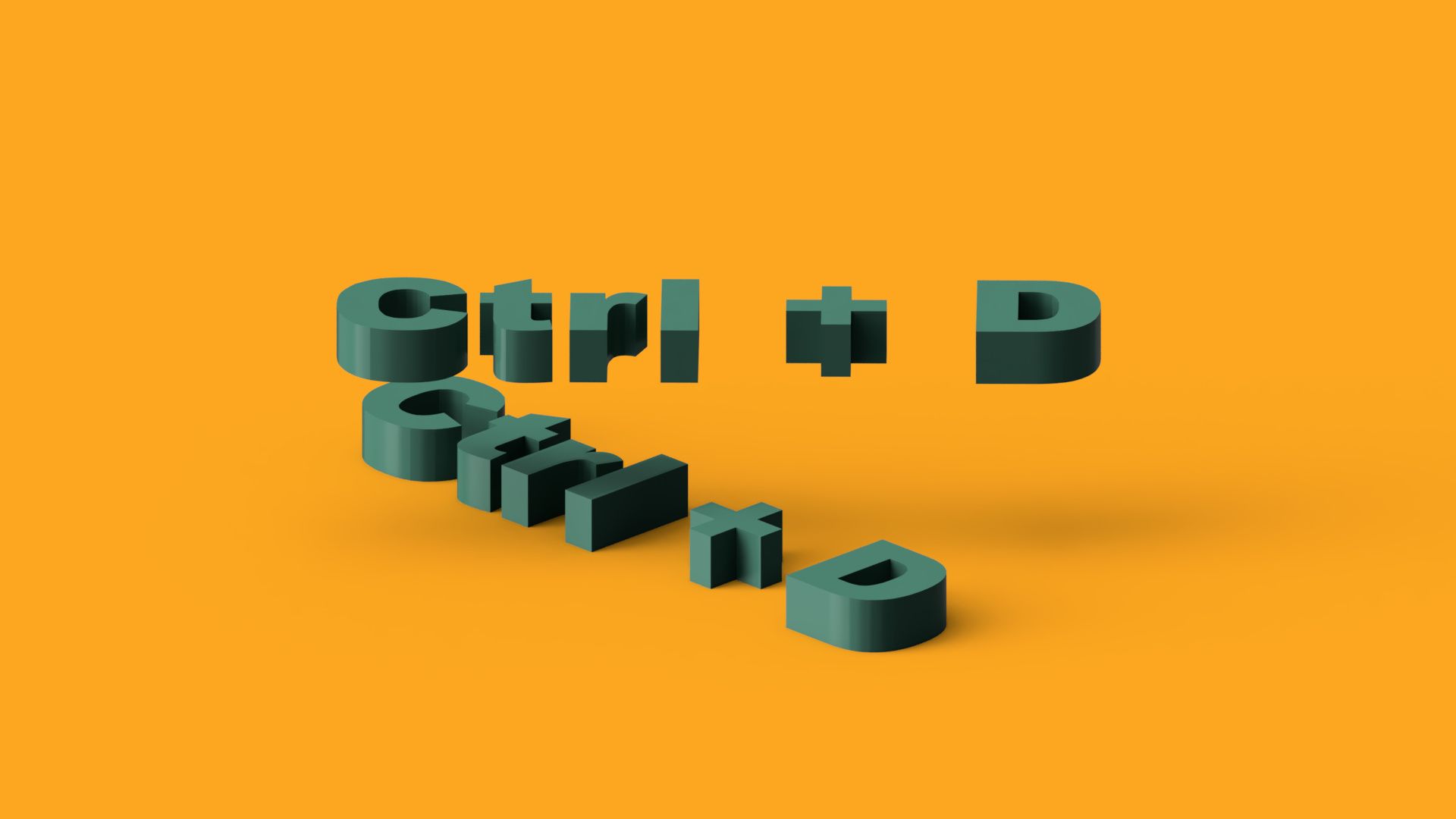5 Tinkercad Shortcuts You Need to Know
Did you know that Tinkercad has a range of keyboard shortcut keys to help with efficiency and problematic tasks? In today's blog, we'll be going over our 5 favourite shortcuts to help you take your Tinkercad game to the next level! Check them out below:

21st June 2020 • Tips
1. Drop (‘D’)
If you have an object selected and you press ‘D’ on your keyboard, it will drop the object to your current workplane. This is obviously useful when you want to place objects on the ground plane, but it can also come in handy when aligning multiple pieces together. Take a look at the below example, which is a tactile tangram model. The workflow involves assembling the tangram pieces together to form a swan shape. Placing the workplane on the edge of one piece enabled us to ‘drop’ another piece onto it, ensuring the faces touched each other.
2. Duplicate and Repeat (‘Ctrl+D’)
Tinkercad’s ‘Duplicate and Repeat’ shortcut is much more than a copy and paste tool. It remembers your previous action! Therefore when you utilise it, it will paste selected objects but also perform your previous action on them. To use the tool, select your desired object and press ‘Ctrl+D’ (or the duplicate icon). With the tool still active, you should then perform your action. This might be moving the copied objects a certain distance away from the original and you can also rotate it how you wish. Then simply press ‘Ctrl+D’ again and a new duplicate will appear with the same action performed! Take a look at the below example, where we used ‘Duplicate and Repeat’ to copy pebble shapes with the exact same spacing to create a ribbed pen shell.
3. Lock Editing (‘Ctrl+L’)
Do you ever have multiple objects in your design and find it tedious to reposition some of them, whilst keeping others in place? By selecting an object and pressing ‘Ctrl+L’, you can lock it in place! This means you can continue to edit or move other objects without the locked one being affected. Take a look at the below example of a classroom layout. We wanted to move the furniture only so we locked the walls and floor, making it much easier to select the furniture in a single selection box.
4. Transparency (‘T’)
The transparency shortcut can come in handy when your design has internal features that can’t be seen due to a solid face being in the way. To use the transparency tool, simply select and object and press ‘T’ on your keyboard. Take a look at the below example, which is a bottle that is made hollow by combining an outer body with an inner hole. The transparency tool allows us to see through the bottle and check the wall thickness from various angles!
5. Uniform Scale (‘Shift+Top Handle’)
When resizing objects, you can hold down ‘Shift’ and drag the white corner handles to scale objects uniformly. But what if you want to scale an object uniformly, whilst keeping it’s centre point on the workplane in position? If you hold down ‘Shift’ whilst dragging the top handle (rather than the corner handles), your object’s centre point on the workplane will remain in the exact same position! Take a look at the below example, where we are using a cylinder hole to cut into a shell to make a candle holder. Our cylinder was too small but we wanted to keep it’s centre in position so we used the uniform scale shortcut (with the top handle) to scale it up.
—
We hope you found these #tinkertips helpful and if you’d like to learn even more about Tinkercad in the classroom, you can get started with a free trial to PrintLab here.